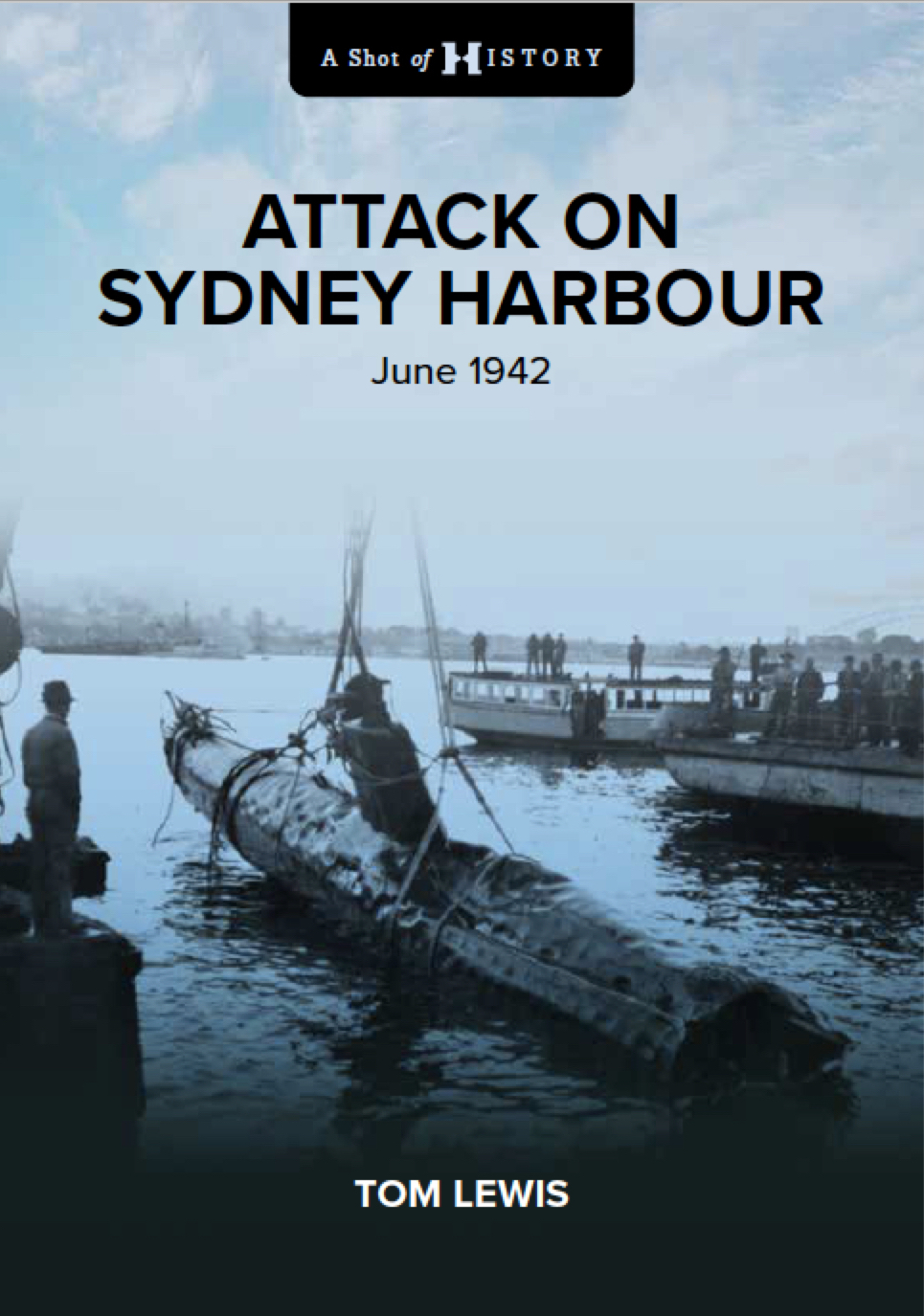In mid-1942 Sydney Harbour was attacked by a midget submarine raid. Some days before, aircraft launched from the mother submarine flotilla overflew the city, to check for targets. Somewhat unbelievably, the aircraft were not identified or fired at, despite being marked as Japanese.
Over time confused accounts have arisen about the nature of the aircraft. Historians usually suggest the machine was a monoplane. Another claim is that the machine had its national markings blacked out or they were never present. This article shows that both those claims are wrong.
Australia’s biggest city – not at war
Sydney in 1942 was Australia’s biggest city. The war had made little difference to the bustling world of business, socialising, children attending schools, and governments doing what governments to. The ferries still made their way at speed over the harbour. On weekends there were still yacht races on the blue sea, with Sydney’s weather usually fine. Although there had been war deaths – and injuries, at a rate of four times the fatalities – in mid-1942 they hadn’t mounted to the tens of thousands that Australia would see by August 1945, when the two A-Bomb attacks on Japan brought an abrupt end to the war.
Australia lost around 34,000 service personnel killed or died of wounds or in captivity during World War II. Total battle casualties – that is, dead and wounded – were 72,814. Over 31,000 Australian became prisoners-of-war. Of these more than 22,000 were captured by the Japanese; by August 1945 over one third of them had died in the appalling conditions of the prisoner-of-war camps.[1]
But in mid-1942 all of this was in the future. In Sydney the emphasis was on having fun. The Sydney Morning Herald advertised “20 Star Acts and Gorgeous Glamourous Girls” at the Tivoli Theatre, while Sergeant York starring Gary Cooper was playing at the cinema, alongside Dumbo from the Disney company, while Bette Davis starred in The Little Foxes. War news was featured – Rommel in Libya was of interest – but much of the news was about farming difficulties, and changes to taxation.
Rationing had been introduced in Australia on 14 May 1942, although the printing of the necessary coupon books would not see them issued until mid-June. It was never to be as severe as it was in the UK. Rationing was enforced by the use of coupons and was limited to clothing, tea, sugar, butter, and meat. From time to time over the rest of the war, eggs and milk were to be rationed under a system of priority for vulnerable groups during periods of shortage.[2]
Ironically, the newspapers of the time did not carry news of a 29 May successful Japanese midget submarine attack, on the northern tip of Madagascar in the harbour of Diego Suarez. Two torpedo attacks had been successful: the old British battleship HMS Ramillies had been badly damaged, and a 7,000 ton tanker sunk. Ramillies was only prevented from sinking by excellent damage control and the strength of her original 1913 construction. She steamed slowly to Durban for temporary repairs and after a major refit in UK was available to bombard the Normandy beaches. But it had been a near run thing. If the torpedo that blasted her bow had hit her amidships in her engine room she would have never left Madagascar.
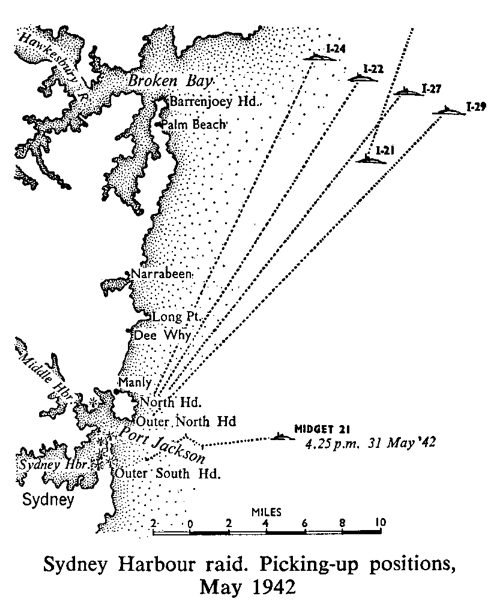
Failure to detect, deter and protect
Clearly a midget submarine packed enough punch to sink a stationary battleship in harbour. If the local naval authorities had heard of the news they had made no change to the Sydney harbour defences. This was indeed grim irony, for the naval officer in charge of such matters was Rear Admiral Muirhead-Gould RN. He had been one of three officers who made up the Board of Inquiry some years before, at the beginning of the war. A German U-boat had penetrated the defence of Scapa Flow, one of the main bases of the Royal Navy, and had sunk the battleship Royal Oak, causing the deaths of 833 men.
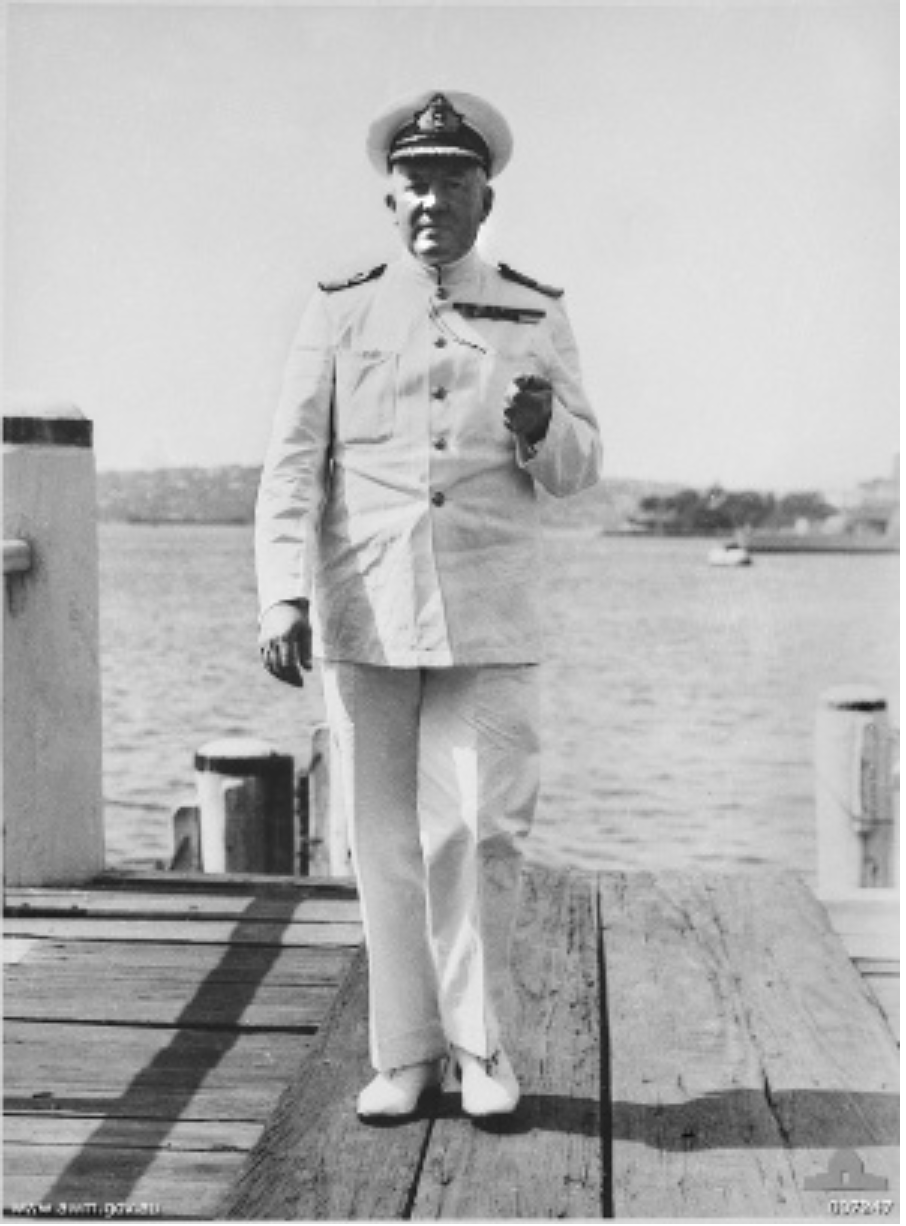
Strangely, Muirhead-Gould had done almost nothing to prepare the Australian harbour from any attack, despite midget submarines being used in the Pearl Harbor assault, six months previously. The protective boom net across the harbour was unfinished; naval patrol craft had confused rules of engagement, and in some case were unarmed. Those vessels had little anti-submarine training, despite a submarine, the Dutch K-7, being gifted to the Navy. The Japanese flotilla arrived outside the harbour several days before the attack, and remained undetected throughout and afterwards. When the attack came, Muirhead-Gould compounded his inaction with denying enemy submarines were present, at one stage standing on a vessel which was now over the top of one which had blown itself up.
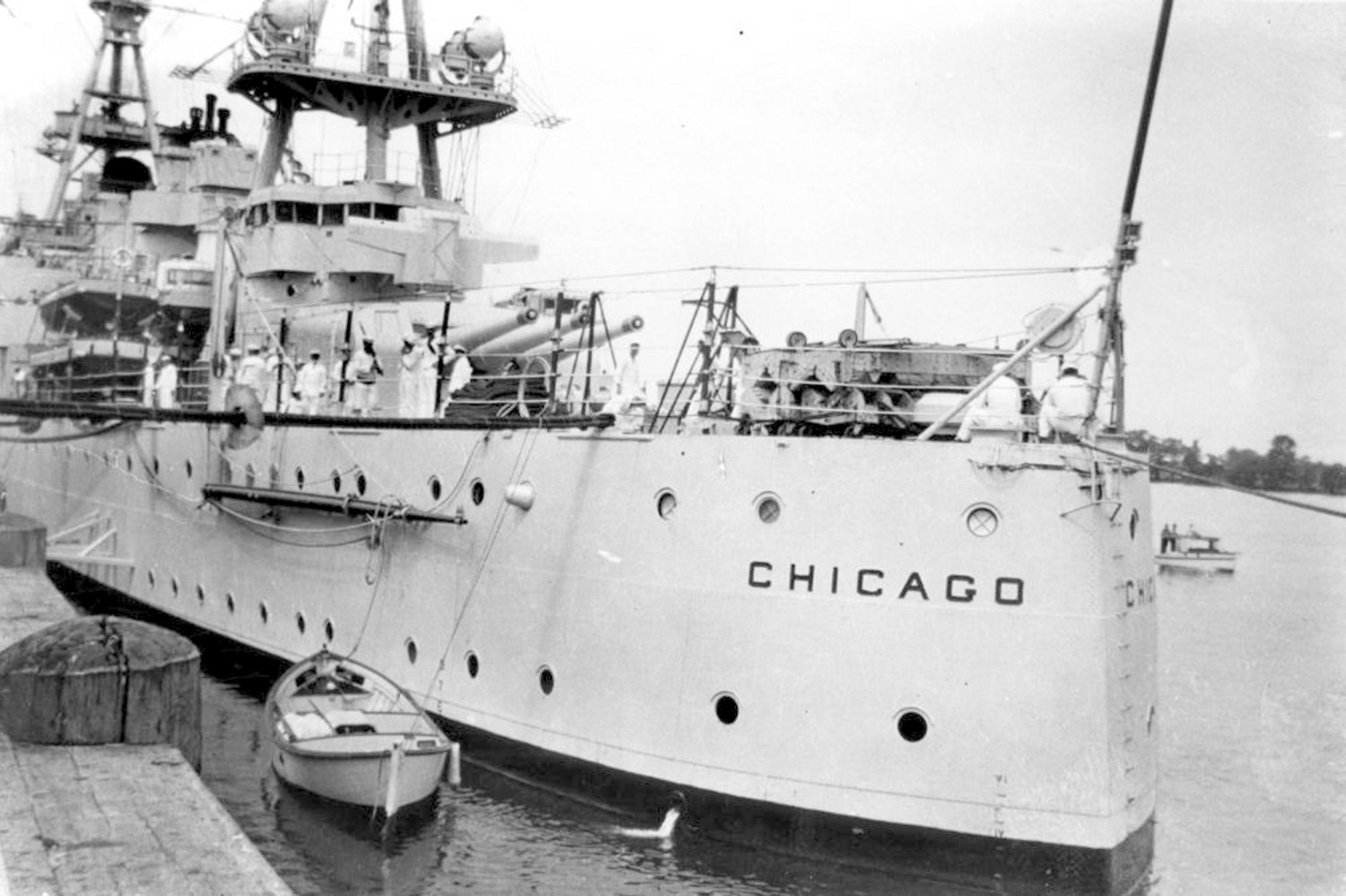
He was joined in incompetence by the captain of the biggest warship in harbour, USS Chicago. This cruiser had just fought in the Battle of the Coral Sea. Her commander, Captain Bode, was much disliked by his ship’s company for his hesitation in battle – he would show such failures again in the August 1942 Battle of Savo Island. On the night of the attack he left the dinner he had been attending – ironically with Muirhead-Gould – and returned to his ship, the two of them alarmed by the explosions which had begun. Like his British counterpart he refused to believe submarines were present, remonstrating with the Office of the Watch over firing within the harbour. Like the RN officer he was brought abruptly into realisation by the detonation of a torpedo under the accommodation vessel HMAS Kuttabul.
The failure to detect the mother submarines, the midgets, and the aircraft was a monumental failure for the Australian forces, in particular the RAAF. Standing patrols over a city are generally not a great use of resources, for to put just one aircraft up permanently for 24 hours a day takes several aircrews and machines as they cycled through to relieve the previous unit. A better alternative is to have radar warn you of intruders, and send a prepared machine off on what was known as a “battle climb” to height. The radar coverage of the area was adequate. The excellent OzatWar website advises: Pilot Officer Roger Sidney Choate in conjunction with Radiophysics installed the large radar on the roof of the observation post and on 10 January 1942, this Shepherd’s Hill RAAF Radar Site became the RAAF’s first operational air-warning radar under the command of Pilot Officer Choate….
The RAAF operated the radar from this location until 19 April 1942. After the radar was removed the buildings were handed over to the Australian Army for shore defence duties. The Radar itself was relocated to nearby Nobby’s Head by December 1943 and used by the Australian Army. The RAAF radar unit was moved to Bombi in New South Wales on 1 April 1942 and became 19 Radar RAAF.[3]
It would seem though if the radar was being used then its sightings were not being interpreted properly. If an enemy had been detected, then attacks on the enemy would have followed. Maybe the Japanese would have been deterred, and they would have left for easier hunting fields. Incidentally, it was not the only overflight: the submarine I-25 had launched an aircraft which flew over Sydney, Melbourne, Hobart and Auckland, New Zealand, earlier in the year, from February through March. Again, although sightings by Australian observers were made, sometimes correctly, the aircraft was not fired upon, except unsuccessfully in Melbourne.[4]
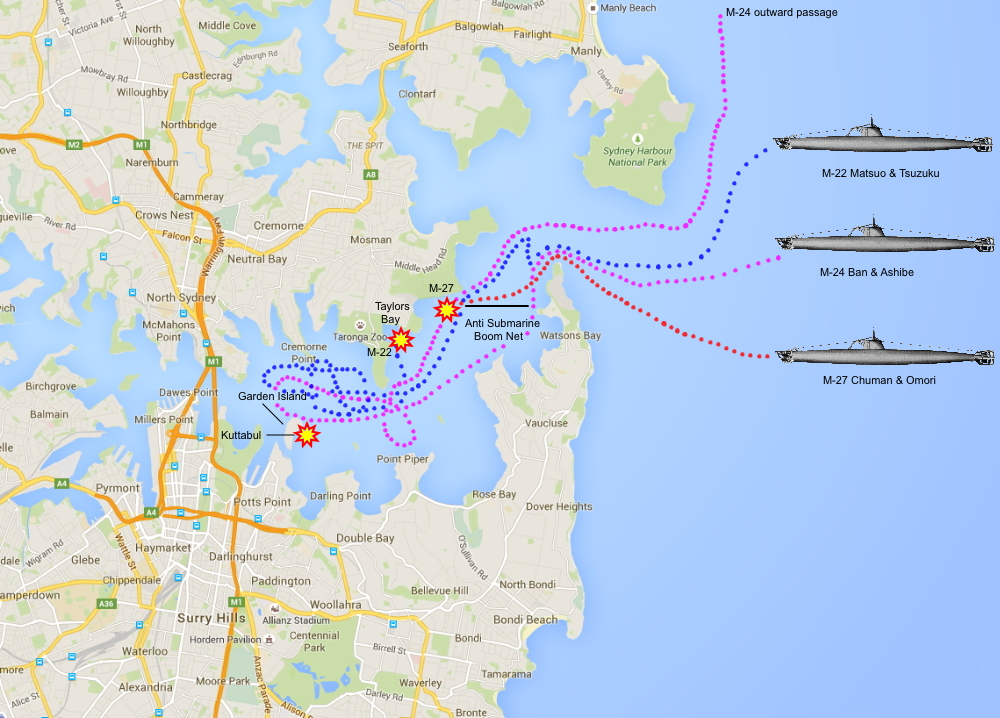
To emphasise the point a little differently, in May 1942 here are five large submarines; three smaller ones, and aircraft, off Sydney around 30 miles from the coast. The aircraft, a slow biplane, is launched in a most vulnerable situation from one of the submarines, and makes a daylight flight – and the RAAF don’t sight it and shoot at it. Five days later, the same enemy outfit surfaces and flies again, this time at night, with the same result. This is despite the Air Force having plenty of assets in the area:
- Airacobras of the 41st Fighter Squadron, USAAF, based at Bankstown for training but providing a nominal air defence of Sydney
- No 18 (Dutch) Squadron with B-25s based in Canberra, flying patrols off NSW coast
- 6 Squadron RAAF with Hudsons, based at Richmond
- Floatplanes and flying boats based Rathmines (south of Newcastle) mostly for training
The overflights
There were two flights made over Sydney in this mid-1942 attack by Japanese seaplanes, carried in the hangars of Japanese submarines and then assembled for flight. The sorties were made to identify any high value targets for a midget submarine attack. There is some confusion over the first flight, likely carried out at dawn on 23 May – the date has been stated otherwise in several[5] books, but the Japanese official history uses this date from the submarine I-129.[6] In the flight, the crew of the two man biplane noted a battleship, a large cruiser or another battleship, two large destroyers or cruisers, two destroyers, and several merchant ships. Consequently orders were issued on 24 May for the attack. I-29’s aircraft was “severely damaged” in her final landing, and so now the flotilla was down to one machine. I-21, which had been making a reconnaissance off New Zealand, was ordered to join the force proceeding south.[7]
The pilot of the second flight was Warrant Officer Susumu Ito, who survived the war. He was later interviewed for television. He says he took off “about 35 miles from the entrance of Sydney Harbour.” [8] The Official History says this was on 29 May, launching at 0247 hours – that is, at 247am in the morning. (Again, there is considerable confusion over the date.[9]) He then:…flew over North Head at an altitude of about 500 metres watching out for an artillery battery there. But when I turned my eye to the city I found there was no blackout in force. Merchant ships moving about the harbour were fully lit. It was clear to me that Sydney wasn’t on alert. I decided the possibility of being fired upon was minimal. The lights were on at the airport. It was a carefree atmosphere. I couldn’t see the water surface clearly. So I lost altitude to 300, then to 200 as I entered the harbour. Over the harbour I did two and a half circuits. I flew past the Harbour Bridge and beyond. At a recent built dock warships were being repaired.
On my return I had trouble finding my mother submarine. So I flew much longer than I should have. If you look down at the water as the surface comes close you get some idea from the white-crested waves as to how rough the sea is….The sea was heavy with a huge swell. When I touched down I crashed into the crest of a wave. [10]
Ito’s report, made when he had been dragged ashore from his sinking aircraft, was sufficient to proceed. He advised of a “U.S. battleship east of Garden Island” – this was in fact USS Chicago; a large cruiser; a large transport ship, and several destroyers, and “at the dockyard” two light cruisers and a destroyer.[11]
We now turn to some of the curiosities of the concept of an aircraft launched from a submarine, before resolving the confusion over the type of aircraft launched from them in the Sydney raid – they were biplanes, not monoplanes, and contrary to some claims, they were marked as Japanese.
The submarine aircraft – assembly and usage
The aircraft were not carried fully functional in their waterproof hangars, although as the war progressed this process became more and more accomplished. Some of the bigger Japanese submarines through the war carried two aircraft, and some three.
Modifications to the wings and tail assemblies allowed folded mechanisms to be made operational more quickly. Assembly of the aircraft took time. It basically had to be carefully bolted together, due to space demands, mostly on the surface, and this made the mother submarine vulnerable to being sighted and attacked. For that reason assembly was preferred by many commanders during the night, but the lack of lighting made work more difficult for the fitters and riggers – the mechanics and assembly ratings – as well as the armourers and more intricate workers such as those in charge of the necessary instruments: altimeter, turn and bank indicator, compasses, and those connected with the engine.
Japanese submarine-launched aircraft generally used a catapult to get airborne. This was a design much experimented with by navies around the world, following the first use of aircraft at sea in World War I.
The first catapult may have been that fitted to the Royal Navy submarine M2 in 1928. This allowed the aircraft to be launched along a slide on the forward casing of the boat, with later recovery still by the conventional rigged crane. [12] M2 was lost in an accident four years later, and this seemed to have signalled a loss of interest in aircraft on submarines for the RN; the USN also abandoned the concept around the same time.
Launching took place by firstly turning the submarine into the wind. This meant there was already air flowing over the aircraft wings – it had already gained, for example, 10 knots of the necessary 50 or whatever speed above stalling was deemed necessary to fly. The submarine would be motoring ahead when this happened, to gain more wind over the wings, although as will be seen later, as least one model Japanese boat had to reverse to gain wind, as her catapult was shipped aft.
The aircraft engine was started, with the propeller rotating. Then the revolutions were advanced until the propeller was a shining spinning disc, and the whole machine was straining in its restraints. The pilot would signal that everything was functioning, and then the restraint – known in the West as a bridle – was let go. In a blur of motion the aircraft flashed down the catapult and was then airborne.
All of this took place with the submarine surrounded by the ocean, which often was not calm. We must add to the picture the wave action; the spray, the wind blowing, and atop the conning tower the Officer of the Watch and the lookouts, anxiously surveying the horizon for enemy.
There was an alternative to being launched by the catapult. The forward deck crane was normally used to recover the aircraft once it landed back on its floats at the end of the trip. The crane was also used for bringing heavy items aboard, especially torpedoes, which had to be manoeuvred down through the hatches and into the forward torpedo compartment. A similar crane arrangement was in place at the stern, not only for engine parts and so on, but also if there was a stern-firing system in place for torpedoes there. (The system of stern torpedo tubes gradually fell out of favour, along with the more unusual side-firing systems experimented with in the WWI era.)
If the catapult was out of action the aircraft could be hoisted out onto the sea surface; the engine started, and a conventional takeoff attempted. This had disadvantages over the catapult system – the aircraft itself would have to turn into the wind; and there would necessarily be constraints placed on any “ground handling” attendants. Such a launch was unusual: Mark Felton refers to one of the few, when I-25’s aircraft was launched over Tasmania in 1942.[13]
Landing
The landing procedure necessarily meant that the aircraft and its parent submarine had to meet up; the landing had to take place safely, and then the aircraft manoeuvred alongside. The crane, having been rigged by now, was used to hoist the aircraft aboard.
Again, the procedure was difficult, and fraught with danger. The aircraft had to land into the wind, this time acting as a brake on proceedings. Landing with the wind behind the aircraft was extremely dangerous if it was anything more than exceptionally slight. Judging exactly where the sea horizon is, is one of the more difficult parts of seaplane operations, for there is nothing to show the pilot the scale of what he is looking at, and the altimeter, used to show height, is not that precise.
Once the aircraft was down a process of using its engine to taxi to the submarine had to take place, with the submarine at the same time using its engines to help the process along. At some stage the decision had to be made that the two were close enough, and the aircraft engine had to be switched off, with the propeller slowing and stopping.
Securing the necessary lines from the crane to the aircraft while it was on the sea, especially those necessary to supply lift, must have been extremely difficult, with the attendant sailors using small boats to pass the lines and secure them properly. The whole process was made more difficult by the fact that the aircraft was quite fragile, with most flat surfaces merely “doped” covered canvas. Place a lifting line in the wrong place and apply pressure and you stood a fair chance of tearing a wing or tailplane off, for example. In addition, after flight the engine would be hot, with protruding exhausts a considerable burn danger.
Once swung aboard, the whole process of disassembly would have to begin. The main section of the aircraft – the fuselage and engine – would have to be stowed, with the wings and tail surfaces disassembled. Again, this had to take place with the submarine surfaced, and therefore vulnerable, but even more so than usual. Diving was of course possible if surprised by an aircraft or warship approaching, but if any part of the waterproof hangar was left open, or any of the aircraft “ground crew” were on the casing, disaster would result. Any crew member who could not make it inside before the hatches were closed would be left on the surface to likely drown, and any equipment not properly stowed would be lost. Accidents therefore would imperil the whole concept of having an aircraft on board at all.
Monoplane or biplane?
The aircraft which flew over Sydney before the submarine raid is often described as a Glen, indeed, this has become common in books and accounts of the midget attack. This was a monoplane; ie: one wing. However, some observers reported a biplane; ie: two wings. This was its predecessor, with the Allied codename of “Slim”. Both aircraft had dual floats. Warrant Officer Susumu Ito survived the war. Interviewed for television he described his plane as having “two floats” but he was never asked about the aircraft type.[14]
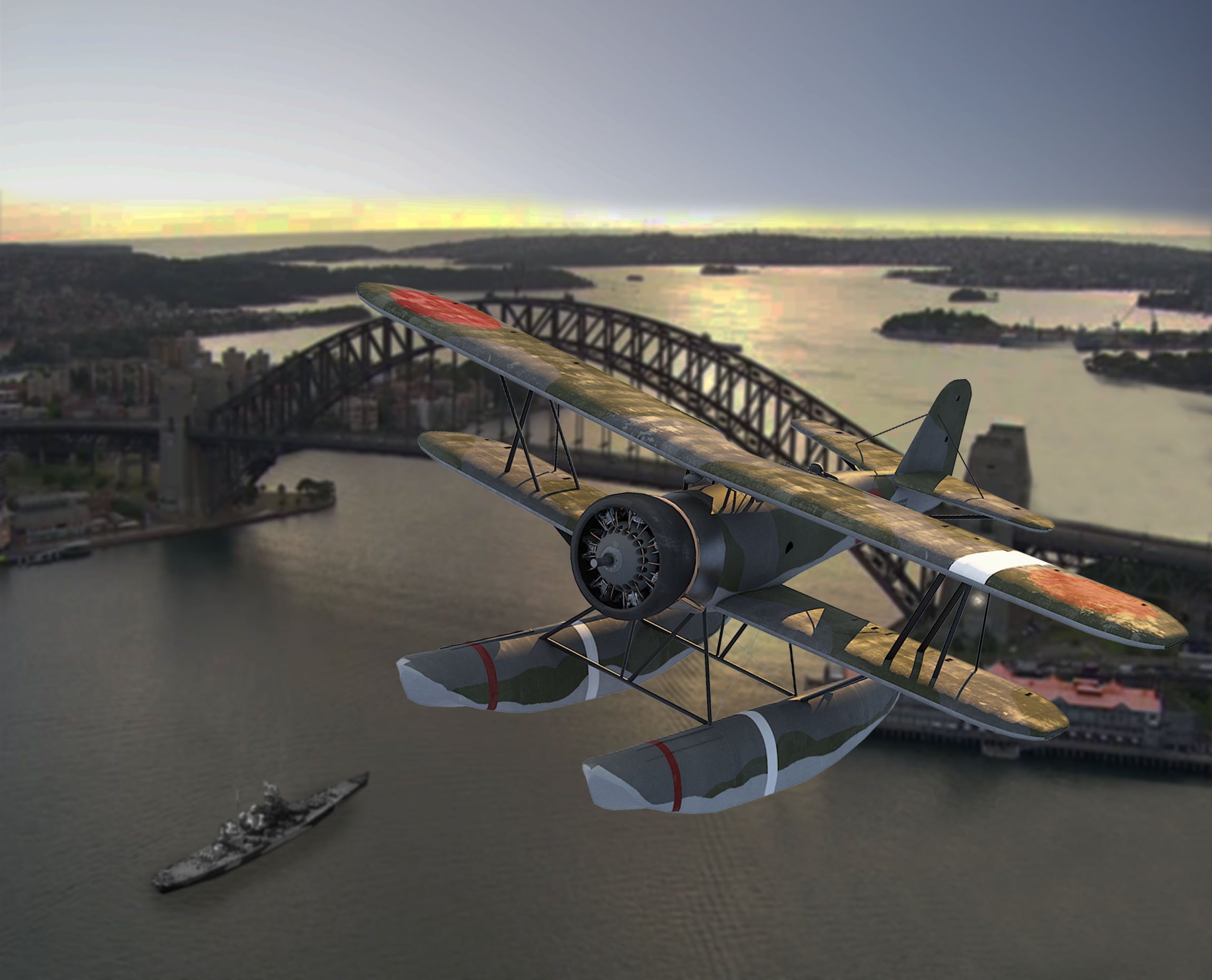
From below it would be most difficult to distinguish whether the aircraft had two wings or one unless it banked towards you. And if conditions were poor, or it was at night, as was the last flight over Sydney, then to distinguish a biplane from a monoplane would be almost impossible. Hence it appears over the years that many commentators, especially looking back and seeing that the Glen was deployed for most of the Pacific War, concluded this would be what flew over Sydney. So over the years most writers and historians commenting on the raids have called the aircraft a “Glen”, or a “monoplane” or both.
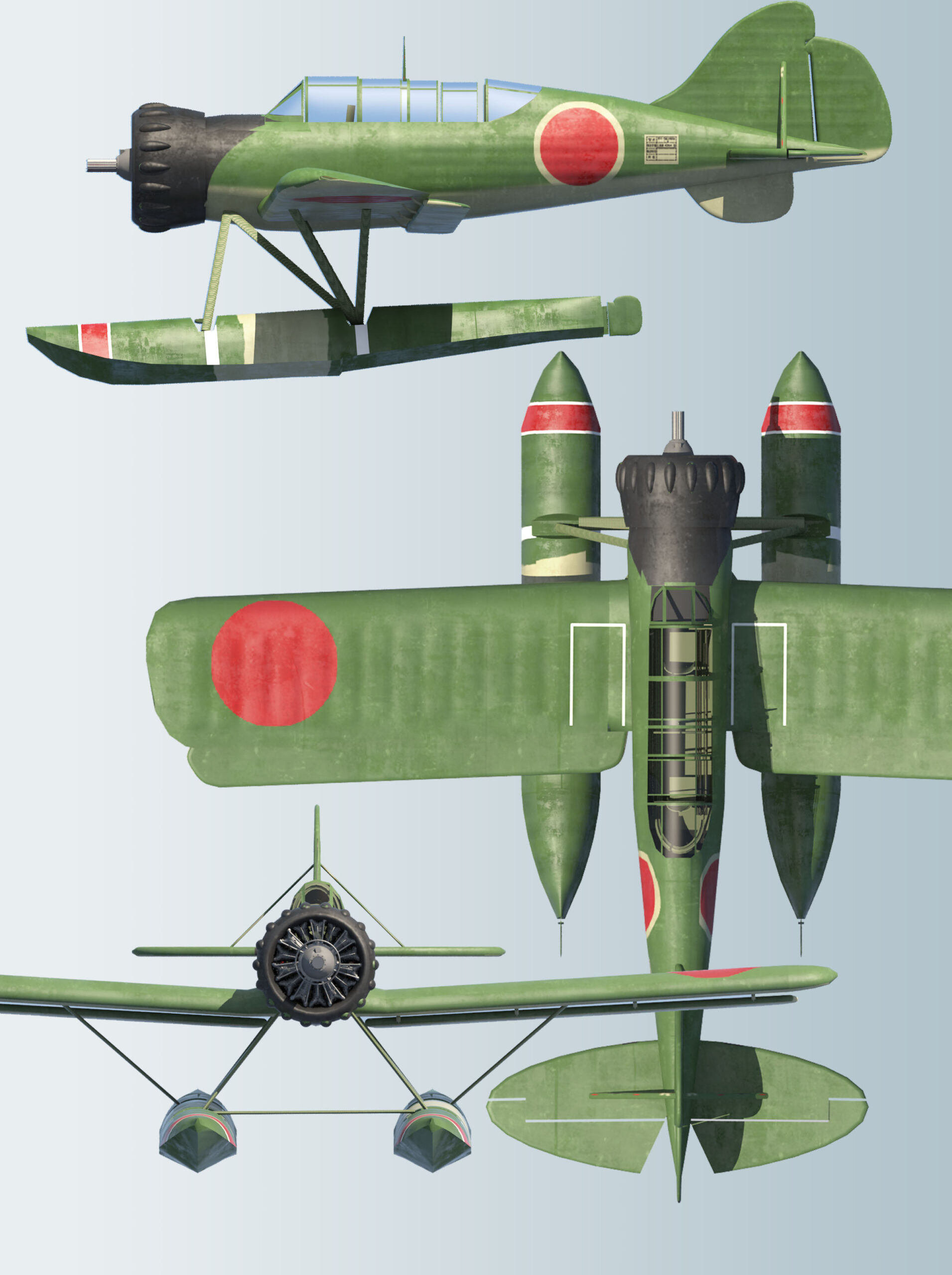
Not having seen a Japanese aircraft before, many in the military who reported a biplane compared it to what they had seen locally, a Curtis biplane. For example the “Yellow air raid warning issued by [the contacted] fighter sector…Curtis type float plane” [15] RAAF Flying Officer Parkinson, says he was told by an Australian Army Unit at George’s Heights that it was “a biplane”[16] Author Peter Grose notes men “believed the plane to be an American Falcon…anyone wanting to distinguish a Falcon from a Glen could make a good start by counting the wings: the Falcon was a biplane; the Glen was a monoplane.” [17] Later signals reporting by the Navy reported a “Curtis type float plane” [18] and again a “Curtis type float plane.” [19]
The reports above were quite accurate – a biplane. It was in later history books that a monoplane was reported. [20] An inspection of modern websites show almost all name the aircraft as a monoplane. But the reason they are wrong is simple – the monoplane successor was not yet in service, as an examination of Japanese records show.
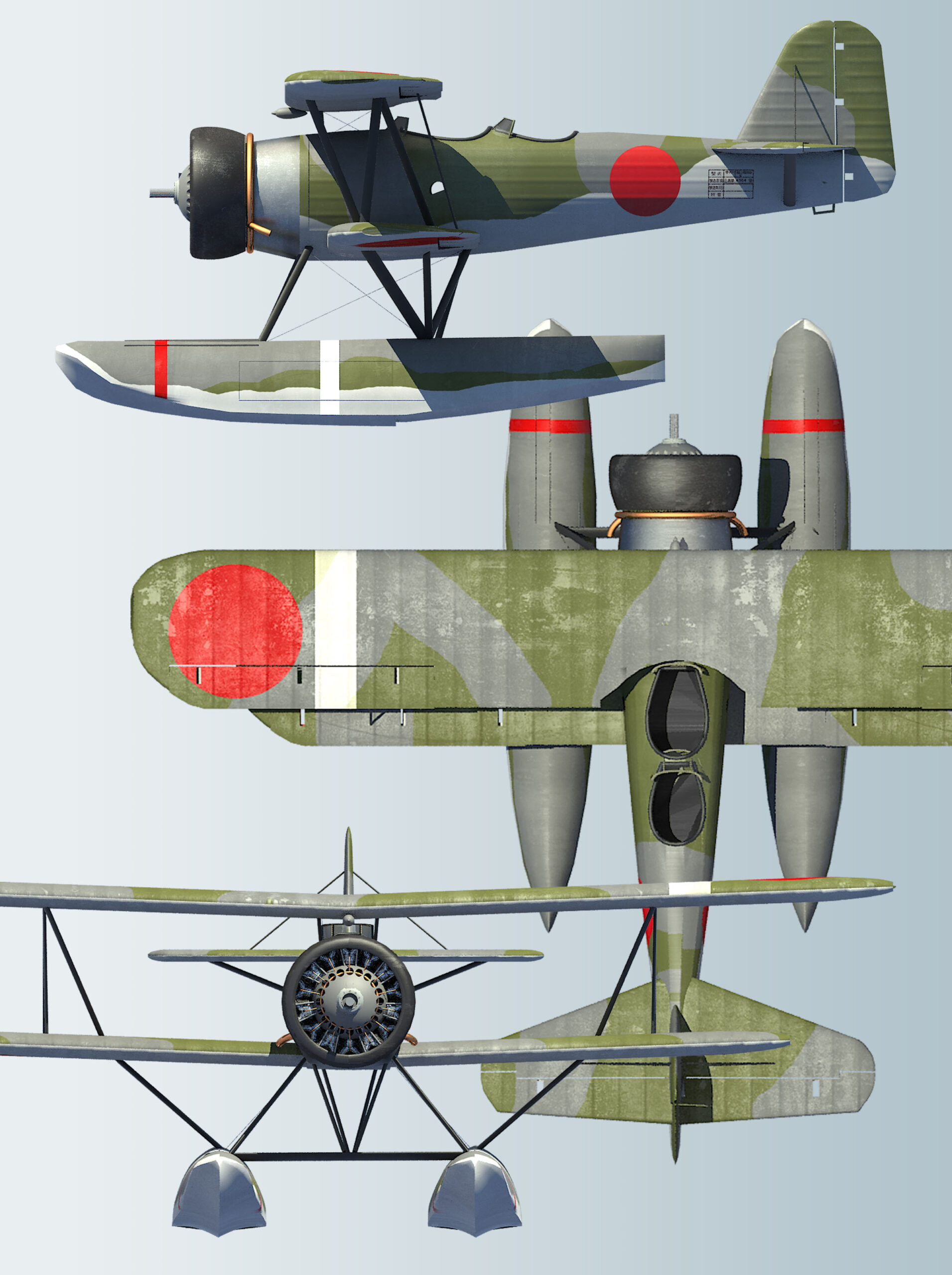
Here Australia’s foremost expert on WWII Pacific aviation, Michael Claringbould, describes the background to the models.
The first IJN submarine-based aircraft was the Watanabe E9W1, later codenamed ‘Slim’ by the Allies. Design for a replacement which would become codenamed E14Y ‘Glen’ commenced in 1937, however for various reasons outlined below it did not enter combat until July 1942. A prototype Glen was produced in 1938, however production was slow, with the first ten experimental versions not completed until early March 1942. These airframes, including several built by a commercial company, were tested under operational conditions, including submarine-based launches, however did not enter combat. The first Watanabe-built production model Glen left the factory in April 1942. When the Pacific War commenced the IJN had six Slims aboard submarines, increasing to fourteen by 14 July 1942, when the IJN restructured after the losses at Midway.
Thus no Glens were yet in operational use at the beginning of the war. Credit for the early series of reconnaissance flights made by submarine-borne aircraft has been mistakenly given to the E14W Glen instead of the rightful participant, the E9W1 Slim.
On 21 November 1941 submarine I-15 put to sea with 13 other submarines, including I-1 through I-7, I-9, I-15, I-17, I-19, I-21, I-23, and I-25. Of these 14 boats, 11 carried aircraft. Prior to these departures, 14 other submarines had already put to sea. According to the 14 July 1942 organizational restructure all the ship-borne aircraft were E9W1 Slims of which the IJN listed 14 in the Combined Fleet inventory.[21]
In other words, in May 1942 there was no Japanese submarine at sea carrying the Glen monoplane.
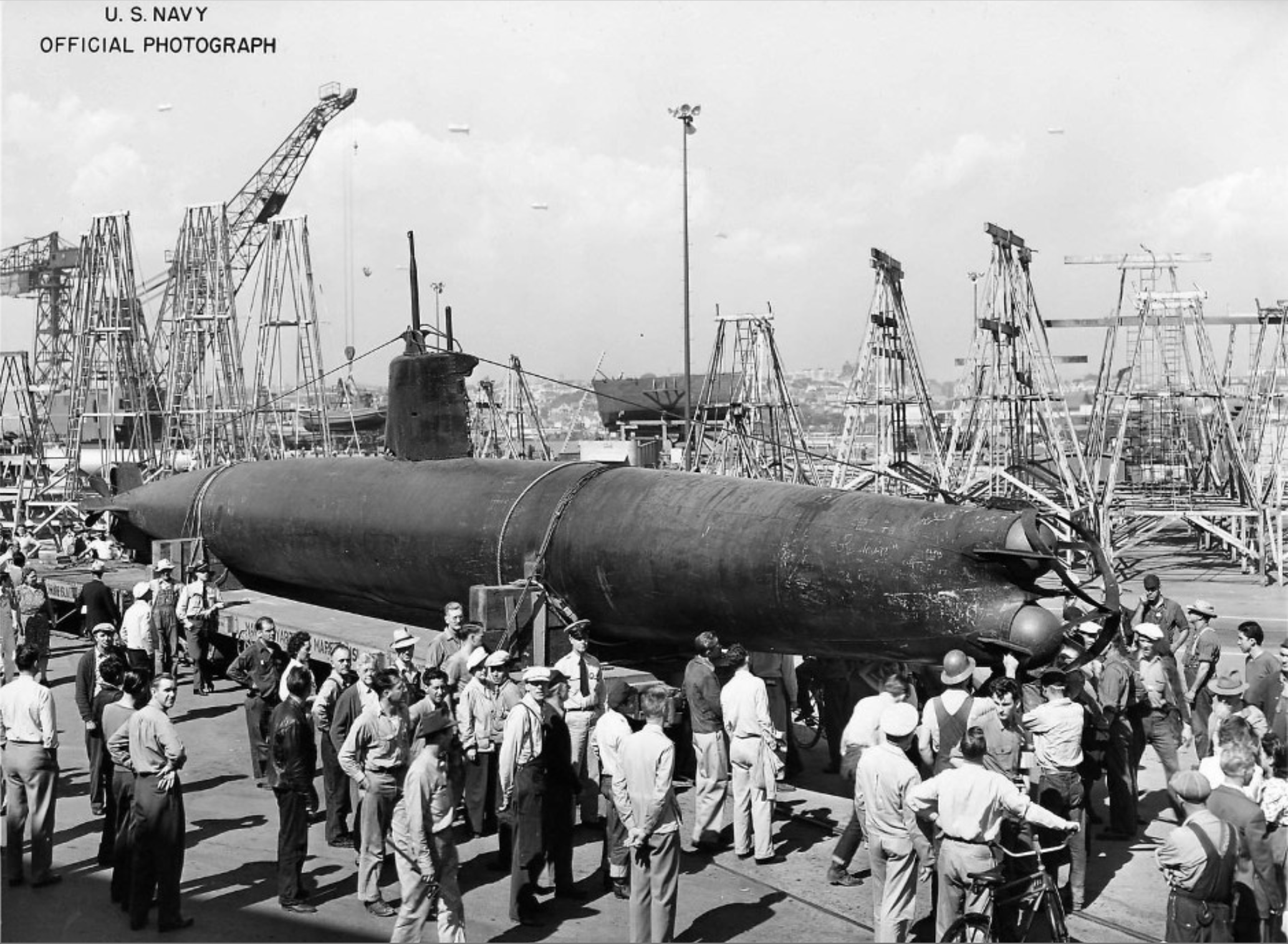
Japanese markings, or not?
Some reporters commented on the markings, or the lack of them, in either or both of the Sydney flights. Then again, others reported that the aircraft had Allied markings. Grose says “The plane had its Rising Sun red insignia painted out so it could not be readily recognised as Japanese” and then “Ito’s plane had all its markings painted out”[22]. He later cites the artillery battery report citing American markings. “With American markings” is repeated in other reports.[23] Richard Hughes, a famous journalist based in the “Far East”, wrote: “The plane, which had collapsible wings, was no bigger than a Tiger Moth, was not armed, and carried no markings or identification.”[24]
Lieutenant PF Wilson, who was “the Royal Australian Navy (RAN) Intelligence Officer at Garden Island that night, recalled….”the first sighting was made by the army artillery battery at George’s Heights, Middle Head, who were lulled into a sense of false security by the plane’s American markings and type…” [25] He also reported they said it was “an American Curtiss Falcon float plane”. Carruthers also cites the army artillery battery. [26]
Historian David Jenkins suggests the Japanese marking had been removed: “for reasons that have never been satisfactorily explained, the distinctive red discs on the fuselage and wings had been painted out.”[27] Others report that the aircraft on the last flight, flown at night, either did or did not display navigation lights.[28] [29] [30]
The Gunnery Officer on board the ill-starred USS Chicago later wrote about his experiences at the time. He recalled:
Shortly after daylight on the morning of May 31, a small Japanese seaplane flew over Sydney harbor. If it was observed on the beach no action was taken. In the Chicago not one of the anti-aircraft personnel noted it; the Officer of the Watch was the only person who saw it. He was an aviator and identified it as an enemy plane. But it was then too late to take action and it escaped.[31]
Claringbould also clarifies the aircraft markings, saying that the IJN was very much based on orders, but unit commanders had limited latitude if combat demanded. He knows of only one case where the hinomaru – the large red circle distinguishing Japanese aircraft – was removed with command sanction. This was in two pre-war missions flown by C5M2 reconnaissance aircraft over areas near Surabuya in what is now Indonesia.
In essence, the hinomaru was always kept and flown as part of the aircraft, and in fact orders have never been found where its removal was commanded. Such a removal would both impugn the reputation of Imperial Japan and transgress international law. Claringbould points out that with the marking in its matte finish, in dusk or dawn conditions an observer would not always see it. He advises the tail registration numbers or code markings, if applied, were always kept.[32]
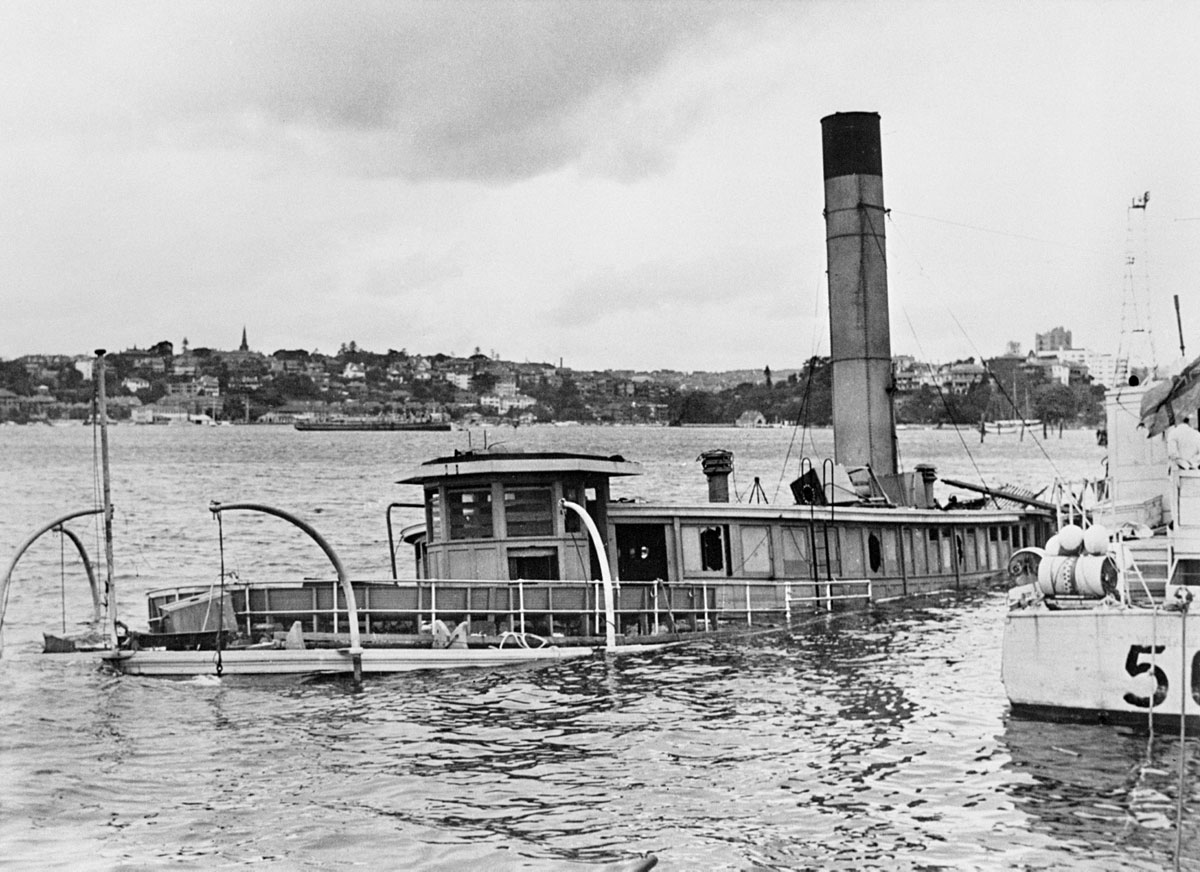
Conclusion
In conclusion, the midget submarine attack on Sydney Harbour was a monumental piece of mismanagement by senior command within the RN and the USN. The stars of the night were the small ship commanders who chased the submarines. One midget was caught in the boom net and blew itself up as some patrol craft tried to depth charge it. The submarine that torpedoed the Kuttabul escaped and was found decades later outside Sydney Harbour – it being attacked earlier likely had a bearing on its commander missing his main target, the Chicago. And the third was cornered in Taylors Bay, where its crew, realising due to the damage they’d received they could not fire their torpedoes, shot themselves. (The mother submarines added insult to injury when they fired with their deck guns against Sydney and Newcastle in the following days.)
The aircraft that caused all of this, by providing good intelligence, should however be correctly identified in their place in the drama. The machines that flew over Sydney were Slim biplanes; they were not fired upon – a most negligent piece of the defence of Australia’s biggest city – and lastly they were indeed carrying Japanese markings. Their role is a small but important piece of the most mismanaged aspect of the defence of the Australian mainland in history.
-o-o-O-o-o-
Dr Tom Lewis OAM is a military historian. A former naval officer, his latest book is The Sinking of HMAS Sydney – how sailors, lived, fought and died in Australia’s greatest naval disaster. His publishers Big Sky released Attack on Sydney Harbour, an analysis of the midget submarine raids, in 2022.
[1]Australian Bureau of Statistics. “Year Book Australia, 1988”. https://www.abs.gov.au/ausstats/abs@.nsf/featurearticlesbytitle/00753BC276CCB154CA2570FF000075A8?OpenDocument
[2] Australian War Memorial. “Rationing of food and clothing during the Second World War”. https://www.awm.gov.au/articles/encyclopedia/homefront/rationing
[3] OzatWar. https://www.ozatwar.com/raaf/shepherdshillradar.htm This site won its founder Peter Dunn an Order of Australia in 2020 for services to history. OzatWar is an illustration how a resource such as a website can become a new facet of how to keep such knowledge constantly updated.
[4] National Institute for Defense Studies, Japan. Military History Section. (2-2-1 Nakameguro, Meguro-ku, Tokyo). Captain Kawano Teruaki (Navy, Rtd.) 15 page monograph. 29 August 1997. The monograph does not mention being fired upon, but there are several accounts in OzatWar of an anti-aircraft battery opening up in Melbourne – see https://www.ozatwar.com/japrecce/recce02.htm. It was likely the aircraft crew did not hear the explosions over their engine noise, and the rounds exploded well behind them.
[5] Warner, Peggy, and Sadao Seno. The Coffin Boats. Leo Cooper, 1986. (p. 95)
[6] Japanese Government. Official Japan War History. “Attack of Sydney Harbour by Special Submarine Boats. (Midget Submarine).” Translation by JETS Sydney (Japanese English Translation Service). Copy held in Seapower Centre, Canberra. (p. 7)
[7] Lind, Lew. The Midget Submarine Attack on Sydney. Galloping Press, 2000. (p. 30)
[8] SBS. Sydney at War – the Untold Story. SBS, 2005.
[9] It is reported as the 30th in Paul Kemp’s Underwater Warriors, John Date’s Japanese Midget Submarine Attack on Sydney Harbour; the Department of Veterans’ Affairs’ Australia Under Attack; and in the SBS documentary Sydney at War – the Untold Story, which interviewed Ito, although he didn’t mention the date – a caption gives it.
[10] SBS. Sydney at War – the Untold Story. SBS, 2005.
[11] Japanese Government. Official Japan War History. “Attack of Sydney Harbour by Special Submarine Boats. (Midget Submarine).” Translation by JETS Sydney (Japanese English Translation Service). Copy held in Seapower Centre, Canberra. (p. 9)
[12] Flightglobal magazine. 31 July, 1931. (pp. 759-763)
[13] Felton, Mark. The Fujita Plan. Pen and Sword, 2006. (p. 109)
[14] SBS. Sydney at War – the Untold Story. SBS, 2005.
[15] NAA. “Midget Submarine Attack on Sydney Harbour – Signals” Item ID 399556 (p. 92) “Curtis” not the correct “Curtiss”
[16] Warner, Peggy, and Sadao Seno. The Coffin Boats. Leo Cooper, 1986. (p. 102)
[17] Grose, Peter. A Very Rude Awakening. Allen and Unwin, 2007. (p. 73)
[18] NAA. “Midget Submarine Attack on Sydney Harbour – Signals” Item ID 399556 (p. 138)
[19] NAA. Midget Submarines – Attack on Shipping in Sydney Harbour. Official Reports. Newspaper Cuttings etc. Item ID 399551 (p. 60)
[20] For example: Mark Felton’s The Fujita Plan. John Date’s Japanese Midget Submarine Attack on Sydney Harbour. Peggy Warner and Sadao Seno’s The Coffin Boats’ the Department of Veterans’ Affairs’s Australian Under Attack. Sydney and the Midget Submarines 1942; Paul Kemp’s Underwater Warriors – Kemp says it was a Yokosuka E14Y, which is a Glen. In David Jenkins’s Battle Surface! Jenkins quotes roof spotter Tim Edelman as hearing an aircraft which he (Jenkins) says sounds like the engine noise Americans reported on hearing “the Glen floatplane passing over the Oregon forests in September 1942.”
[21] Text supplied by Michael Claringbould in 2021. Further details may be found in the later publication of his book Pacific Profiles Volume Eight IJN Floatplanes in the South Pacific 1942-1944. Adelaide: Avonmore Books, 2023. Claringbould’s primary source information is the Kodochosho, the generic name applied to the Japanese WWII records.
[22] Grose, Peter. A Very Rude Awakening. Allen and Unwin, 2007. (p. 71 and p. 73)
[23] Date, John. Japanese Midget Submarine Attack on Sydney Harbour. Naval Historical Society of Australia, Feb. 1993. (p. 2)
[24] Hughes, Richard. The Courier-Mail. “Jap pilot tells how he flew over Sydney”. 26 Mar 1949. (p. 2)
[25] Department of Veterans’ Affairs. Australian Under Attack. Sydney and the Midget Submarines 1942. (p. 2) Author’s emphasis.
[26] Carruthers, Steven. Japanese Submarine Raiders 1942. Casper, 2006. Carruthers, citing a 1957 interview with pilot Ito in The Daily Telegraph of 29 May 1957, and records of Captain Sasaki in the Japanese War History. (p. 175)
[27] Jenkins, David. Battle Surface! Random House, 1992. (p. 188)
[28] Warner, Peggy, and Sadao Seno. The Coffin Boats. Leo Cooper, 1986. (p. 101)
[29] Jenkins, David. Battle Surface! Random House, 1992. (p. 188)
[30] Hughes, Richard. The Courier-Mail. “Jap pilot tells how he flew over Sydney”. 26 Mar 1949. (p. 2) “The plane, which had collapsible wings, was no bigger than a Tiger Moth, was not armed, and carried no markings or identification.”
[31] Floyd, Rear Admiral William O, USN. Letter to researcher Lyn Quayle. Sea Power Centre, Canberra. 9 Feb 1982.
[32] Personal discussions Jan-March 2022. I am grateful to have read parts of Claringbould’s book then in preparation: Pacific Profiles. IJN Floatplanes 1942-1944 South Pacific. https://avonmorebooks.com.au/?page=3&id=152
Contact MHHV Friend about this article.
